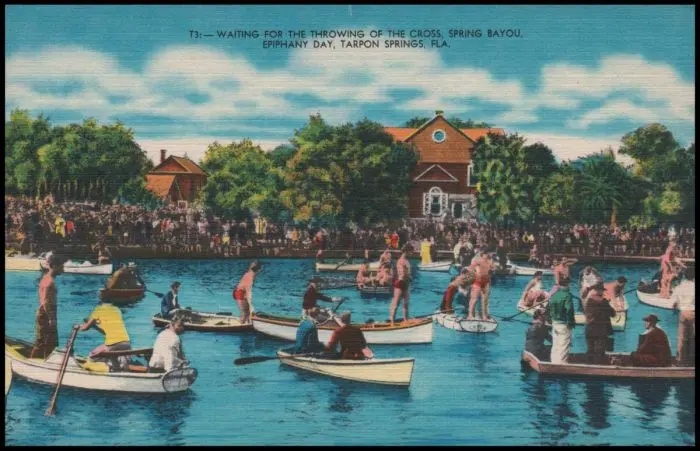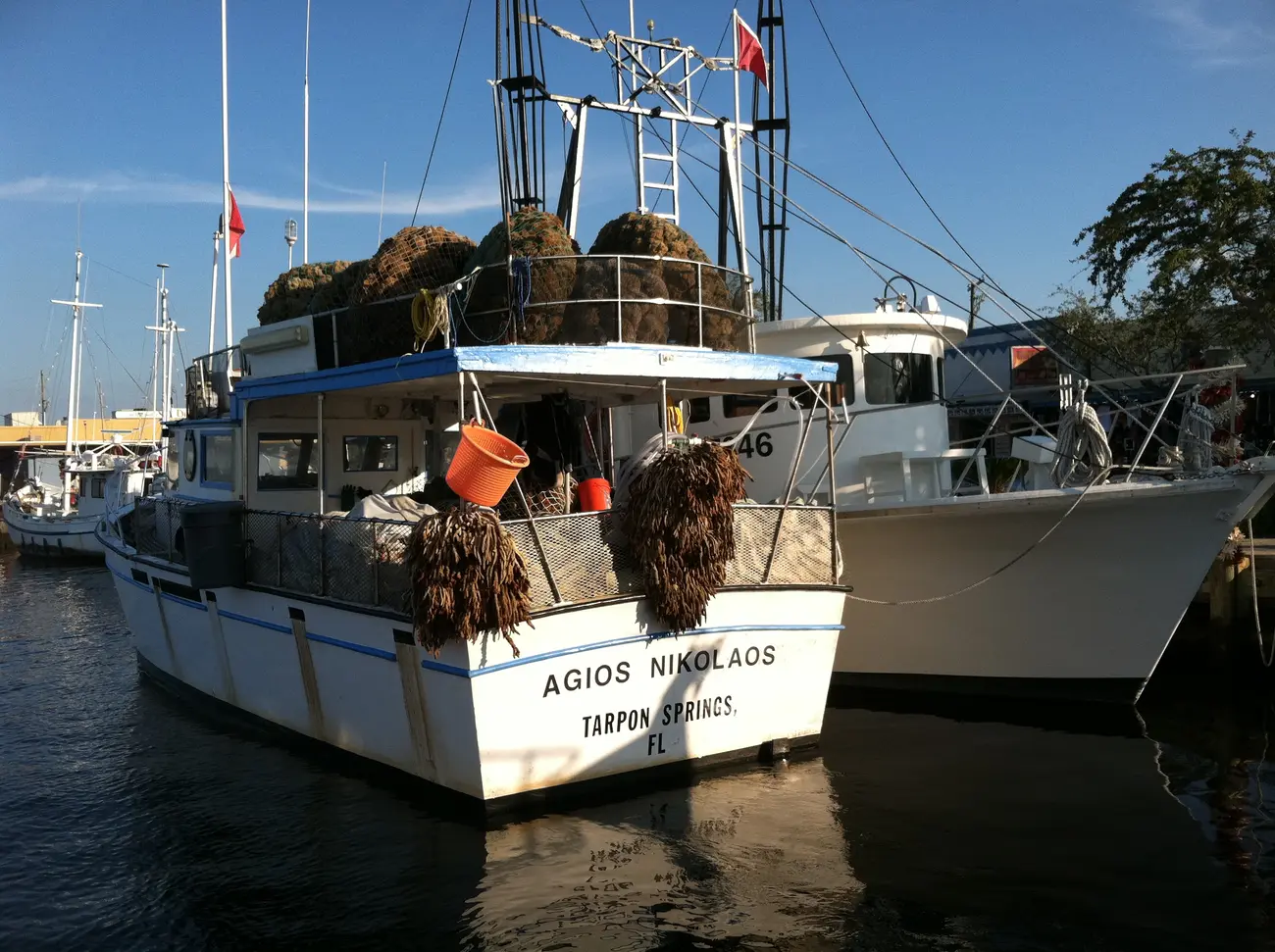Since 1906, people have gathered at Spring Bayou in Tarpon Springs each January 6th to watch young men compete to find a submerged wooden cross. Today, thousands attend the ceremony. The unique Epiphany celebration is one example of the Greek culture that is still prevalent in Tarpon Springs.
In the city of Tarpon Springs you can listen to Greek music played on a bouzouki, try the pastry baklava, have a meal of lamb stew or a Greek seafood dish, sip the licorice flavored alcoholic beverage ouzo, and enjoy many other aspects of traditional Greek culture.
You can see the Neo-Byzantine style architecture of St. Nicholas Greek Orthodox Church, and watch the sponge divers unload their catch on the city dock downtown.
Tarpon Springs has the largest percentage of Greek Americans of any city in the United States.
“Even today, after people have been here four or five generations, there is still a big segment of the population that speaks Greek,” says Tina Bucuvalas, curator of arts and history for the City of Tarpon Springs.
When the first Greeks came to Tarpon Springs in 1905, a thriving town was already in place.
When Hamilton Disston bought 4 million acres of land for 25 cents per acre in 1881, it included the land that would become Tarpon Springs. To stimulate development, Disston brought businessman Anton Safford to Tarpon Springs.
The Victorian home that Safford lived in can be visited today. The Safford House Museum features period furniture and original family artifacts that present the home as it was in 1883.
The Orange Belt Railway came to town in 1887. The train depot is now a museum.
“The building we’re in was built in 1909 because the original railroad station burned down in 1908. This was restored in 2005,” says Sharon Sawyer of the Tarpon Springs Area Historical Society.
“The railroad was brought here by Peter Demens. He brought the railroad from Sanford to Tarpon Springs and then on down to St. Petersburg. Before the railroad came, everybody had to get here by boat or wagon, so the railroad in 1887 made a big difference here in town.”
It was the sponge industry that really put Tarpon Springs on the map.
By the mid-1800s, there was a thriving sponge industry in the Florida Keys, but by the early 1900s, Tarpon Springs was the largest sponge port in the United States.
While sponges in the Keys were harvested with long poles, in Tarpon Springs, Greek sponge divers donned canvas suits with round metal helmets.
“John Cocoris realized that the way that sponges were harvested in Greece would produce far more than the hooking methods they were using in Florida,” says Tina Bucuvalas.
“They brought over Greeks. At first 500 came in 1905, and then within a couple of years there were 1,500, and there were a lot of boats. It very quickly made Tarpon Springs the Sponge Capital of the World. Tarpon Springs was a big, important town at a time when St. Petersburg was a wide spot in the road.”
With the large influx of Greek sponge divers and their families to Tarpon Springs, businesses and institutions to serve them were established, including restaurants, grocery stores, bakeries, and coffee houses.
Today, Tarpon Springs retains a distinctive European flavor.
“They get up in the morning and have Greek food, and sweep out their courtyards which have various plants you might see in Greece,” says Bucuvalas. “They’ll have their coffee outside. The old ladies in their head scarves will be going over to St. Michael’s Chapel or St. Nicholas, or down to the bakery.”
St. Nicholas Greek Orthodox Church was constructed in 1907 and expanded in 1943 with marble imported from Greece.
The unique Epiphany celebration held each January 6th attracts people from around the world. Following a ceremony at the church, the congregation walks to the dock at Spring Bayou, where a wooden cross is thrown into the water. The young man who retrieves the cross is believed to bring special blessings to his family for the year.
The Patriarch of Constantinople, the Greek Orthodox equivalent of Catholicism’s Pope, came to Tarpon Springs in 2006 for the 100th anniversary of the town’s Epiphany ceremony.


